What Are the Functions of Eggs?
Posted on: May 15th 2019

Whether baking or cooking, every ingredient has a purpose, including eggs. How the fats, proteins, and other components of these substances react with other elements will determine the outcome of your recipes. Knowing these interactions and what eggs do in baking can make you a more successful baker.
The Functions of Eggs in Baking and Cooking
Table of Contents
For baking, you need ingredients to create structure, tenderize, bind, and more. For many baked goods, flour, sugar, oil, and eggs are common ingredients. Among these, eggs are the one that does not have many alternatives because they have so many functions in recipes. The unique structures of the yolks and whites make eggs the perfect ingredient for baking. You’ll quickly discover there are many more than five functions of eggs in baking and cooking.
1. Structure
Eggs Add Structure To Baked Goods
The structure of baked goods depends on the ingredients connecting and baking into a matrix. The dish must maintain that structure throughout the baking process. Some foods, like souffles, will deflate soon after cooking as the air in them escapes, but other dishes, such as cakes, remain light and tall long after you remove them from the oven.
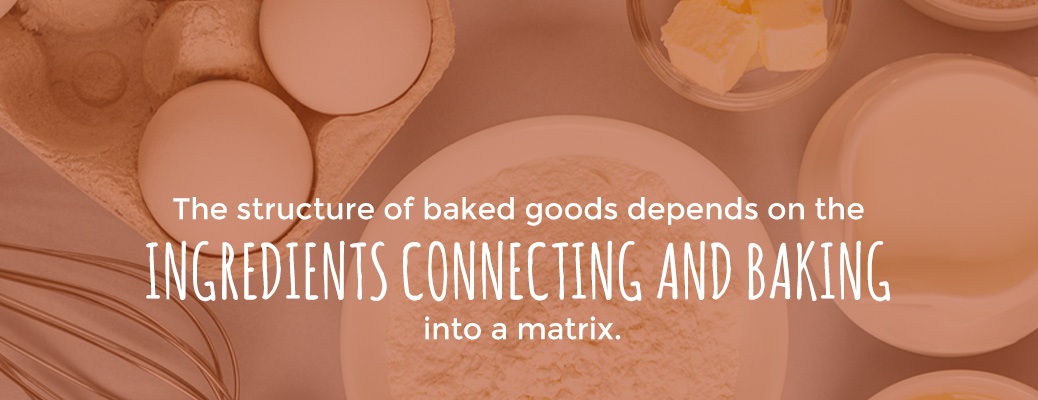
If you’ve ever had a flourless cake, you know how important the use of flour is for structure. However, the eggs in a cake recipe help link the flour molecules to the other ingredients, contributing to the formation of the final product.
Even without flour, the structure of a product can rely on the inclusion of protein-rich ingredients. In recipes such as angel food cake, souffles, or meringues, you beat air into egg whites. Air bubbles unfold proteins in the whites, allowing them to bind with each other, creating the fluffy, stiff structure of beaten whites. If treated gently and baked, this light, airy structure remains intact, giving the dessert its distinctive quality.
In gluten-free baking, the lighter flours may make the product too crumbly. Adding an extra whole egg or white could solve this problem, which explains why this food is the most common alternative to gluten as a binder in gluten-free recipes. The extra protein acts as an additional binder to make up for the missing structure gluten-containing flour would create.
2. Leavening
Eggs Help Add Texture And Fluffiness
The structure from beaten whites also leavens the recipes you use them in. For instance, the airy texture of an angel food cake would be impossible without the leavening of the beaten whites. For maximum leavening power, use room temperature egg whites, pristine bowls and beaters without any grease, and a small amount of acid to stabilize the whites. With enough time and effort, you can beat whites up to eight times their original volume.
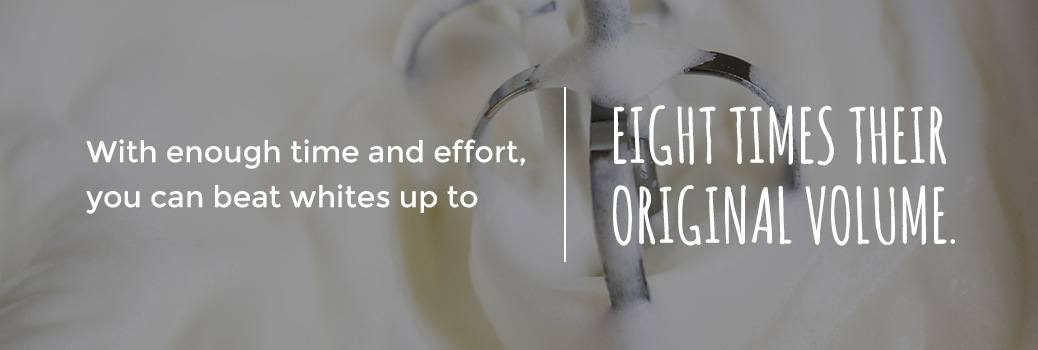
Some dishes use whole eggs for leavening. While the inclusion of the fat from yolks prevents the whites from reaching high volumes when beaten, the yolks and whites will still trap air until you bake the dish. This trapped air lightens the texture of the food and helps to hold the structure needed.
Another way dishes get leavened is through the creation of steam during baking. Moisture-rich ingredients, such as eggs, heat during cooking and turn the water in the whites and yolks to steam. One part water transforms into 1,600 parts steam, a significant volume increase that helps raise the structure of baked goods, especially those that rely on steam like popovers and cream puffs. Compared to other baked goods, these steam-reliant foods have a higher percentage of eggs in the recipe, which contributes to their rise and hollow interiors, perfect for filling.
3. Tenderizing
Eggs Keep Baked Goods More Delicate
Gluten is a protein in the flour of baked goods. The long strands of gluten contribute to chewiness in finished products. Flours with higher gluten percentages have chewier textures, such as bread flour, whereas those with low protein content, such as cake flour, produce more tender products. When added to baked goods, the fat from yolks shortens the recipe’s gluten strands, yielding a more delicate, toothsome result.
Another way yolks help tenderize baked goods is through trapping moisture in the product’s structure. The set proteins in the egg hold moisture in the baked good, making it more tender and less likely to go stale quickly.
4. Moisture
Proteins in Eggs Hold The Moisture In
Moisture in baked goods prevents the products from going stale while improving the flavor and texture. Fats act as moisturizers in food, which the yolks contain. The proteins found in both the yolks and whites also contribute to holding moisture from the yolks in the finished goods. Whether cooking with traditional wheat-based flours or making gluten-free recipes, moisture levels are essential. However, if you must convert a conventional dish to gluten-free, you may need an extra egg or yolk to add moisture to the recipe.
The balance of moisture in desserts is essential. Too much will cause mold to grow on cakes or other baked foods. However, too little makes the food crumbly and dry. Eggs trap water in cooked foods, holding moisture in for better texture while preventing mold from accessing it and growing. Shelf life, whether in a home kitchen or sold in a bakery, increases thanks to the delicate balance of moisture the food maintains.

On their own, eggs also contribute moisture to baked goods. The whites contain 88 percent water, and the yolks 50 percent. If you need to create a vegan substitute, you must also replace the lost water in addition to the protein and emulsifying properties. While eggs can trap moisture in the food’s structure, it also can lock in moisture when used as a coating or wash on the exterior of the food.
5. Wash
Eggs Help Add A Shiny Finish
Many types of bread use a wash to create a protein-rich coating that repels excess moisture while giving the loaf a shiny finish. Some foods that have toppings will use a wash of egg whites and water to hold the seeds, nuts, or grains in place during baking. The whites must be watered down to around 10 to 15 percent protein for the best adhesion of toppings on the baked good.
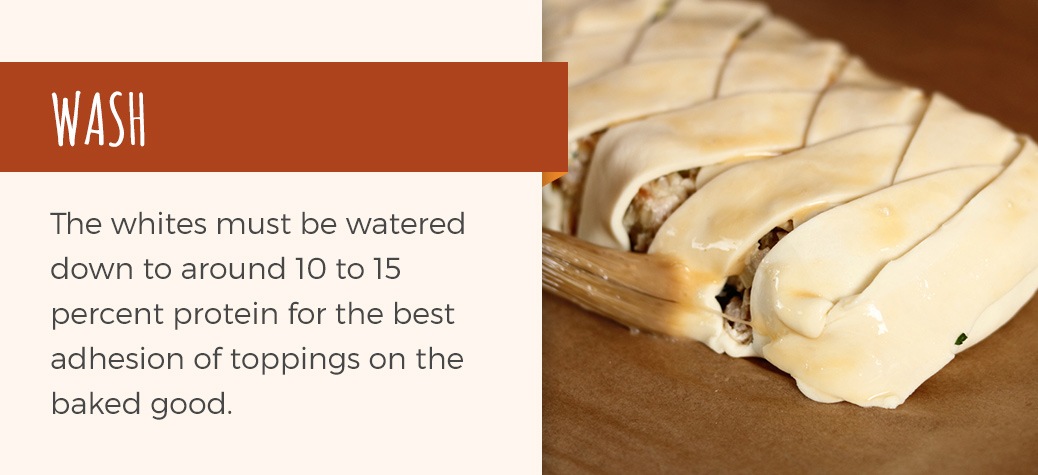
A wash does more than hold toppings onto baked goods, though. Coating meats in a whole egg wash makes it easier for breading or crumbs to stick to the meat throughout baking. This adhesion before cooking comes from the natural stickiness of eggs. After cooking, the proteins from the whites and yolk hold the coating tightly in place. Whether making breaded pork chops, fish sticks, or chicken tenders, you need to start with a protein-rich layer to keep the exterior starches in place.
6. Emulsifying
Eggs Help Ingredients Mix Better
You may have heard the expression that you can’t mix oil and water, but thanks to emulsifiers, you can. The emulsifier makes it easier to break up oil molecules into particles small enough to suspend in water. Emulsifiers found in eggs include lecithin in the yolk and albumin in the whites. Lecithin covers oil particles to keep them from gathering together once in the water-based mixture. By preventing the oil from clumping back together, the emulsifier prevents the finished product from separating. Typical examples of emulsified mixtures are mayonnaise, salad dressing, baked goods, and ice creams.
The proteins used as emulsifiers work because they have a water-loving, hydrophilic, end and a water-fearing, hydrophobic, end. These ends create bridges between the oil molecules and water. The water-fearing parts bond to the oil while the water-loving ends adhere to the water molecules. These bridges allow for better stability of the finished mixture.
Without the ability of emulsifiers to bridge waters and fats, foods would not attain the needed texture from mixing oil into a cake batter, and salad dressings would separate without constant shaking.
7. Flavor
Eggs Add Flavor
Without the richness of yolks, the tastes naturally in baked foods would not stand out as much. Eggs contribute flavor to baked foods. Consider the differences in taste between a white and yellow cake. The only difference is the inclusion of yolks and whites in the latter, while the former uses only whites. Yolks have the unique ability to carry other flavors due to their fat content. The capability of fats to deliver flavor is one reason low-fat foods taste bland to many people.
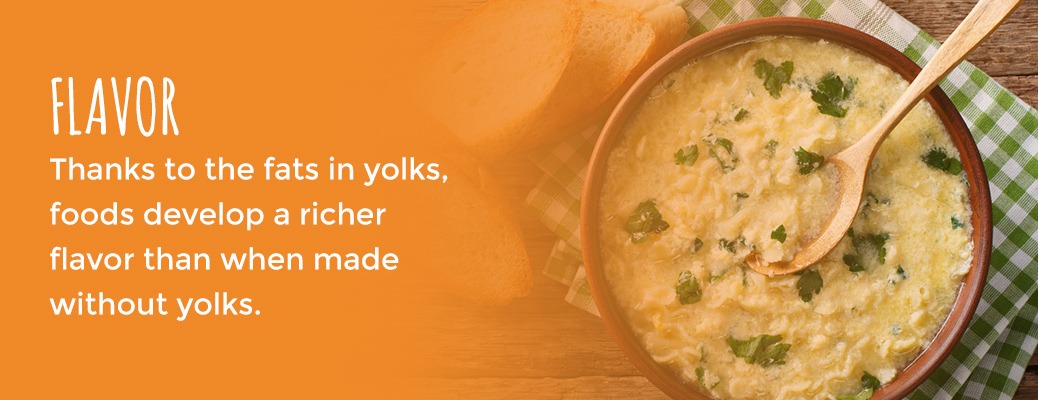
In fact, while scientists have found over 100 flavor compounds in eggs, these perform a lesser role in the taste of foods made with yolks and whites than the fats found in the yolks. Thanks to the fats in yolks, foods develop a richer flavor than when made without yolks. The fats work with other ingredients in the dish to create a synergistic taste of rich, sweetness that cannot be replicated perfectly with substitutions.
Part of the flavor of food also comes from the mouthfeel and texture. Lipids from yolks contribute a richness not only to the flavor of foods but also to the texture. Fats coat the mouth in a way other compounds cannot, giving foods made with lipids a distinctive mouthfeel that low-fat products cannot easily replicate.
8. Color
Eggs Add Color
The color of foods with eggs included comes from the color of the yolks. The carotenoid xanthophyll gives the yolks their distinctively bright color as well as contributes to the color of foods made with the yolks. Going back to the white and yellow cakes, the yellow coloring of the cake comes from the yolks added to the mixture. Similarly, the yellow color of lemon meringue pie comes not from the lemons in the recipe but from the yolks used in the custard layer.
What sets xanthophyll in yolks apart from other forms of coloring is its stability. Yolks retain their yellow hue through many kinds of baking, freezing, cooking, and heating. Without the color contributed by the yolks, many recipes would not look or taste the same because taste starts with the visual perception of the food. Color is so essential to food that many manufacturers use artificial coloring to enhance the appearance of their products. When you cook with eggs, though, you can rely on the natural golden hue the yolk contributes to the dish for the perfect appearance.
Additionally, eggs also facilitate the Maillard reaction that occurs when proteins cook and brown. This browning occurs both in foods as well as on the surfaces of baked goods. The Maillard reaction explains why pastries with an egg wash achieve a shiny, browned exterior. Foods made with yolks also brown on surfaces exposed to the heat. The top of a cake gets darker than the interior because it has direct exposure to the heat of the oven whereas the interior only has indirect heat exposure.
9. Nutrition
Eggs Are Packed With Nutrition
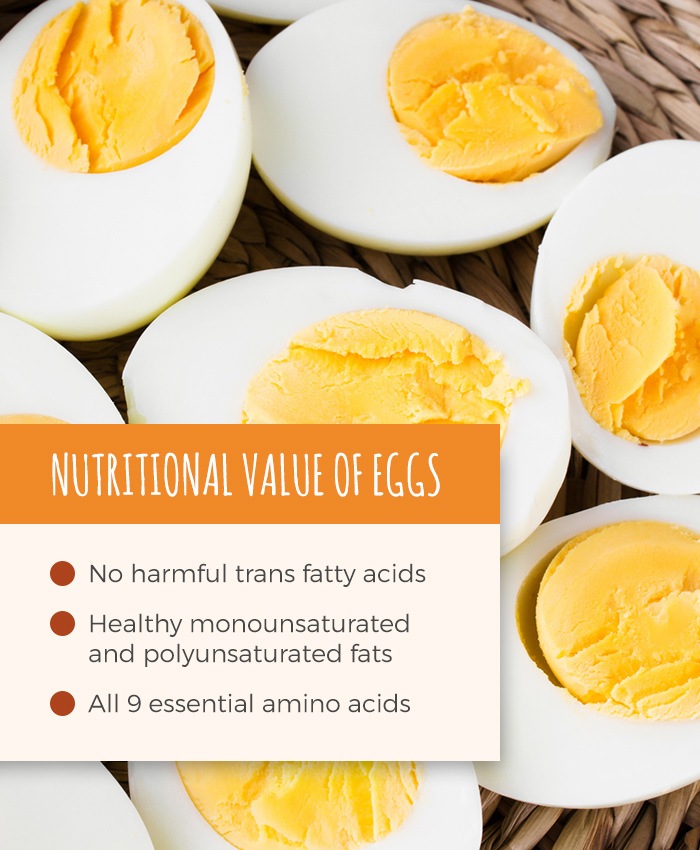
While yolks and whites contribute numerous physical functions to the properties of baked goods, they also enhance the healthfulness of foods with extra protein and fats. Eggs do not include harmful trans fatty acids but healthier monounsaturated and polyunsaturated fats. Depending on the type, the yolks may have up to 4 percent cholesterol, though scientists no longer think dietary cholesterol has as severe an effect on health as was reported in the past. Fats have necessary functions in the human body, and you need to eat lipids, even cholesterol, in addition to proteins for a healthy diet.
For foods that need a protein boost, adding egg whites can help. When making foods that do not require cooking, like smoothies, opt for pasteurized whites for food safety. Unlike other protein sources, eggs have all nine essential amino acids the human body cannot make on its own. Humans can use the protein from this source better than from other foods.
While protein and fats are essential to a healthy, rounded diet, vitamins also play roles in keeping you fit. From yolks, you can get vitamin D and the carotenoids lutein and zeaxanthin, which keep your eyes healthy. Choline also comes from the fat found in yolks. This substance improves cell functioning.
10. Thickening
Eggs Help Thicken Dishes
Proteins in eggs set at different temperatures. This property makes the combination of yolks and whites perfect for thickening sauces, mainly because the setting factor allows each egg to hold four times its weight in moisture from the sauce. When thickening sauces and custards, simmer the mixture to set the proteins gently without scrambling them. Egg whites set between 140 and 149 degrees Fahrenheit, while yolks set between 144 and 158 degrees. Slowly reaching these temperatures will prevent the proteins from cooking too soon and ruining the dish.
The Functions of Egg Parts
Functions of egg parts come from their composition, including the micro and macronutrients in them. Even the amounts and types of fats and nutrients in the food can change depending on the diets of the chickens that laid them. Overall, though, eggs are still a healthy food in a compact, low-cost package. These foods are good for your health and good for your pantry as a quick way to start any number of baked recipes such as French toast, cupcakes, bread, smoothies, and more.
1. Whole Eggs
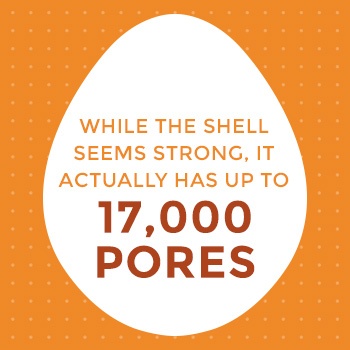
The whole isn’t always greater than the sum of its parts, but that may be true of whole eggs. The combination of fats from the yolk and protein from the whites makes the whole a complete food that serves as a binder, moisturizer, thickener, and flavor contributor to recipes.
While the shell seems strong, it actually has up to 17,000 pores. The tough shell keeps bacteria outside while still allowing moisture and air to pass through. Calcium carbonate in a crystalline structure makes up the shell. Between the shell and the white lie the inner and outer membranes and a cushioning air layer. These protect the inner white and yolk from bacterial invasions. The air cushion rests at the wide end, where it grows larger over time.
Inside these membranes, the chalazae suspend the yolk inside the white while connecting it to the other membranes. In very fresh eggs, the chalazae are more prominent. The white contains 40 different types of proteins and surrounds the yolk, which contains fats, vitamins and minerals. All these components combine to make whole eggs a wonder for baking.
2. Egg Yolks
The chalazae hold the yolk in the middle of the whites. Surrounding the yolk is a thin layer called the vitelline membrane. This layer holds in the contents of the yolk and prevents them from mixing with the white. Half of the yolk is made of water, while the rest comes from fats and proteins.
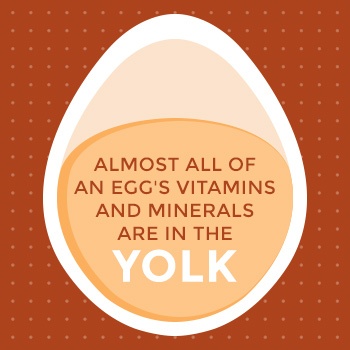
Almost all of an egg’s vitamins and minerals are in the yolk. Vitamins include vitamins A and D, thiamine, and riboflavin. Minerals found in the yolk are iron, calcium, phosphorous, and more. Other essential nutritional components of the yolk include lutein and zeaxanthin, both of which are more bioavailable in eggs than from other sources. So, despite their small amounts in yolks, the lutein and zeaxanthin you get are easier for the body to absorb and use.
Yolks are used to increase emulsification. Recipes that require more yolks that whites need a smoother finished product. While whites have some ability to emulsify, yolks do the job better, which explains their use in hollandaise sauce. Lecithin and other proteins in yolks help to unite oils and water in recipes while keeping them from separating after you stop mixing. The stability of the emulsion becomes critical for recipes like ice creams and frozen yogurts that change from liquid to solid states and need to keep the fats from separating.
3. Egg Whites
Though made of up to 90 percent water, the whites also have 40 different proteins. These proteins create four layers in the white, also called the albumen. The layers alternate thickness from thick to thin and help to hold the yolk suspended safely away from the shell.
When you cook whites, they turn from transparent to opaque. This occurs when the proteins in the white cook. Heating whites uncurls the proteins, which link to other proteins from the white, forming new bonds that block out light, making the surface appear solid. If you continue to heat egg whites too long after they have set, even more bonds form, making them rubbery in texture.
Out of all the parts of an egg, the white has the unique ability to foam when beaten. However, whites only maintain stiff peaks in the absence of oils or fats. If you have greasy beaters or bowls, you will not get successfully beaten whites. In egg whites, the ovalbumin holds the foam during beating, while the protein ovomucin retains the air bubbles in the structure during baking. Substances without these proteins, like yolks, cannot achieve the light, airy foam possible with whites. When making angel food cake and other products that rely on this foam, whites have no suitable replacements.
Incorporate the Usefulness of Eggs Into Your Next Recipe
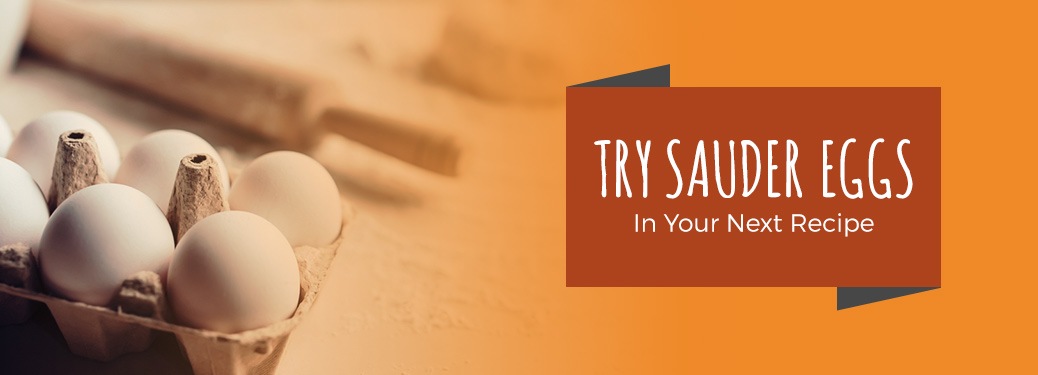
With so many uses and functions, you should always keep a carton of eggs on hand for everything including baking and making quick meals. From tenderizing and adding flavor to leavening and increasing nutrition, eggs perform so many duties in the kitchen they do not have an equal.
Because the success of your recipes relies on the quality and freshness of the eggs you use, choose a trusted name that connects you with the farm-fresh products you need — Sauder Eggs. Find a retailer for Sauder Eggs to get the eggs you need from our family to yours.
